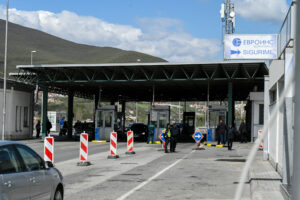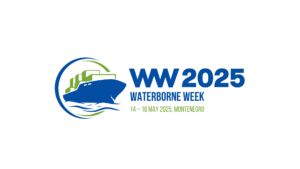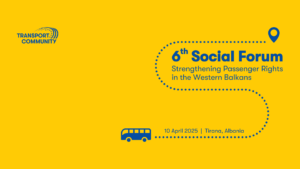According to a 2015 World Bank study, waiting time at borders in Western Balkans was estimated at about 26 million hours per year. Improved infrastructure and better coordination have shown the potential to significantly reduce the waiting times. The launch of Green Lanes at the beginning of the COVID-19 outbreak, as a joint initiative of Transport Community, CEFTA and Regional Cooperation Council, not only reduced the waiting times, but became one of the most successful examples of regional cooperation, managing to preserve trade flows, not only for the economic benefits, but also for effective fight against the pandemic.
Within the region, the first-priority truck lane dedicated to the Green Lanes in the Western Balkans was opened on border crossing Presevo-Tabanovce, between Serbia and North Macedonia. The lane serves as a green corridor for the agreed priority list of goods. Establishment of a well-functioning system on this crossing was facilitated by the so called “one-stop-go” model, introduced in 2021, and now in operation in both directions. Waiting times have been reduced, while export, import and transit of goods have accelerated.
In 2022, the first Green Lane border crossing between Western Balkans and the EU became functional between Greece and North Macedonia. Exchange of pre-arrival information with Greece allows for targeted risk assessments and faster controls. This opened the possibilities for further expansion of the Green Lanes initiative to other EU Member States. In September 2022 electronic exchange had been agreed by the Customs Administrations of Albania, Montenegro and Italy for the goods transported by maritime transport via the SEED+ system.
By establishing the Green Lanes on the borders with the EU, we are bringing the region closer to the EU. This kind of crossings are a steppingstone to even better managed borders and lead to decrease of waiting times for passengers and freight.









